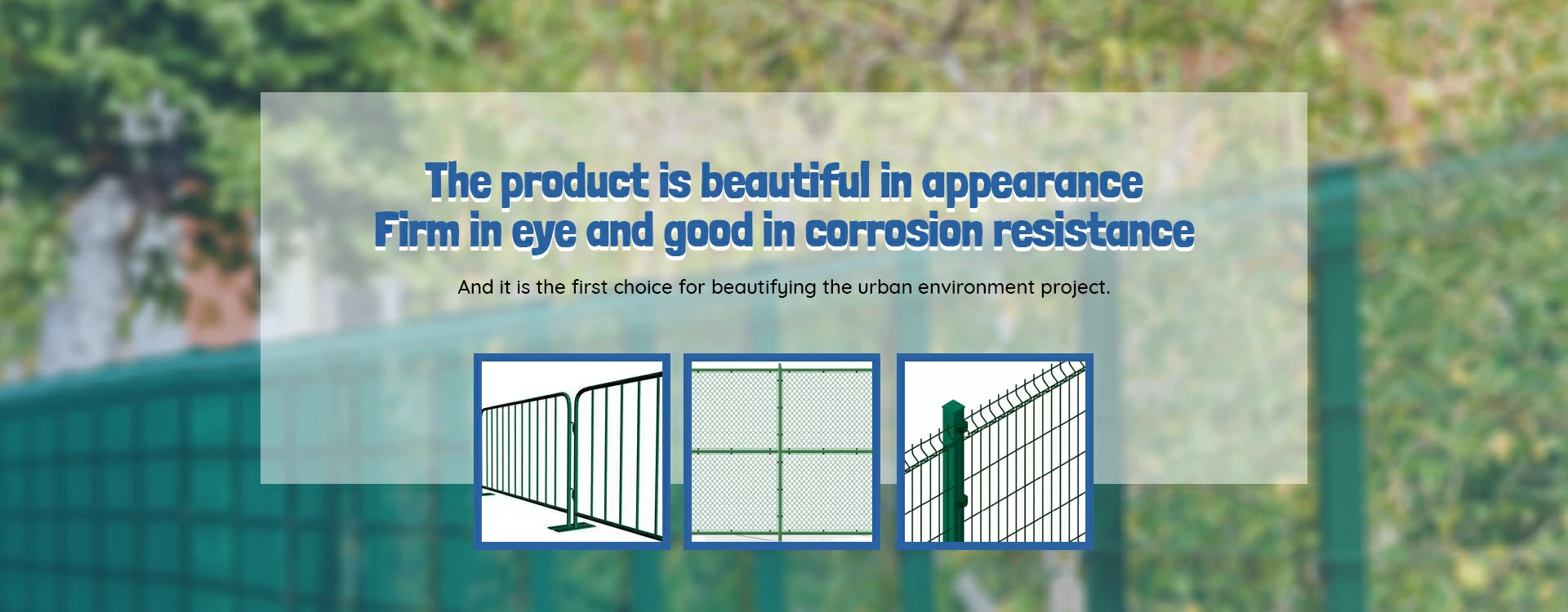 TEL:
+86-13102802206
TEL:
+86-13102802206
 Email:
fencenetting@china.com
Email:
fencenetting@china.com
 Language
Language
 TEL:
+86-13102802206
TEL:
+86-13102802206
 Email:
fencenetting@china.com
Email:
fencenetting@china.com
 Language
Language


Temporary Stock Fencing A Practical Solution for Livestock Management
In the world of agriculture, effective management of livestock is critical. Farmers face numerous challenges in ensuring their animals are safe, secure, and grazing in appropriate areas. One effective solution that has gained popularity in recent years is temporary stock fencing. These portable and versatile fencing systems provide farmers with flexibility and efficiency in managing their livestock.
What is Temporary Stock Fencing?
Temporary stock fencing refers to movable fencing systems designed to contain livestock for short-term periods. Unlike traditional fencing, which is often permanent and can be costly to install, temporary stock fencing offers a more flexible option. It can be easily set up and taken down, allowing farmers to adjust grazing areas according to seasonal needs or specific management goals.
Typically made from lightweight materials like plastic or wire, temporary stock fencing can be assembled without specialized equipment or extensive labor. Many systems come with posts that can be easily driven into the ground and have features such as electric conductivity to deter livestock from attempting to escape.
Benefits of Temporary Stock Fencing
1. Flexibility One of the primary advantages of temporary stock fencing is its flexibility. Farmers can quickly reconfigure grazing areas to prevent overgrazing, manage pasture health, or rotate crops. This adaptability is particularly beneficial for livestock operations that rely on rotational grazing, where animals are moved frequently to optimize forage use.
2. Cost-Effectiveness Installing permanent fencing can be an expensive undertaking, especially for large tracts of land. Temporary stock fencing provides a more economical alternative, allowing farmers to invest resources in other critical areas of their operations while still maintaining effective livestock management.
3. Ease of Use The simplicity of setting up temporary fencing cannot be overstated. Most systems can be installed and removed by a single person in a matter of hours. This ease of use is especially advantageous during inclement weather or when time is of the essence, such as during calving season.

4. Protecting Pasture Health Overgrazing can lead to soil degradation and reduced forage quality. Temporary stock fencing enables farmers to implement grazing plans that allow specific areas of the pasture to rest and recover, promoting better overall pasture health. By controlling livestock movement, farmers can ensure that their land remains productive and sustainable.
5. Enhanced Livestock Safety Bringing animals to new forage areas may expose them to unfamiliar terrain, increasing the risk of injury. Temporary fencing can help create safer environments by allowing farmers to monitor and control livestock movement closely, reducing the risk of accidents or exposure to dangerous conditions.
6. Seasonal Applications For operations that may shift with seasons—such as dairy farms transitioning from winter feed to spring pastures—temporary stock fencing offers a means to adapt fencing structures quickly. Farmers can change fence locations to align with the animal's needs and seasonal conditions.
Challenges and Considerations
While temporary stock fencing boasts numerous advantages, it is not without its challenges. Farmers must ensure that temporary fences are adequately maintained to prevent livestock from escaping. Regular checks and adjustments may be needed, particularly after storms or adverse weather conditions.
Additionally, while temporary fencing can be robust, it is essential to choose the right type for specific livestock breeds. Some animals, such as cattle, may require more substantial barriers than lighter materials designed for sheep or goats.
Conclusion
In conclusion, temporary stock fencing presents a highly effective solution for livestock management. Its flexibility, cost-effectiveness, and ease of use make it an attractive option for farmers looking to optimize their operations. As agriculture continues to evolve in response to environmental and economic pressures, innovative solutions like temporary stock fencing will play a vital role in ensuring the sustainability and profitability of livestock farming. By utilizing these adaptable fencing systems, farmers can enhance their pasture health, improve livestock safety, and efficiently manage their animal husbandry practices.